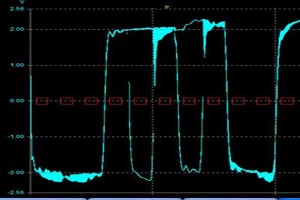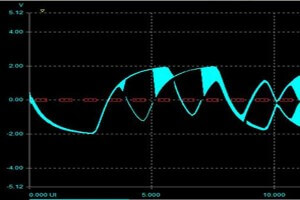Measured Results and Practical Benefits
These graphs illustrate an ideal 96kHz AES 24 bit digital signal (Figure A) a plot of this signal through 40m of standard AES cable (Figure B) and the same signal though 40m of cable modified with fine strands, a nitrogen-foamed polyethylene dielectric and no screen (Figure C). The plots show how the modifications dramatically improve transmission to go further and to be faster, clearer and more reliable.

The technology briefly covered here gives an insight to some of the performance improvements to be obtained from careful cable component selection. The best way to illustrate the difference some of these details in cable design can make is with practical examples. Contact us for a set of samples so that you can test the physical properties of cables we have developed and see what a big difference the small design features make to the products.

One might say that it is the convergence of technologies that is now driving a need for improved cable performance. The expectation of audio system performance is getting higher. Even the most basic entry level systems perform at a standard that would be considered hi-fi only a few years ago.

Sophisticated developments such as Line Arrays require high quality interconnection and installers must allow for the fact that many installations have now evolved to digital. All these applications need cabling solutions and data backbones to match the rising demands of the equipment. Meanwhile the specification of product is improving, meaning that it is more important that the infrastructure we put in now will deliver in the foreseeable future.